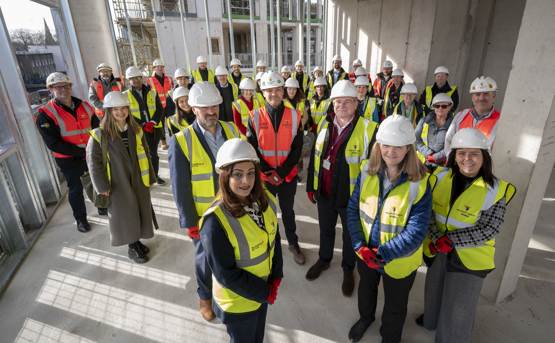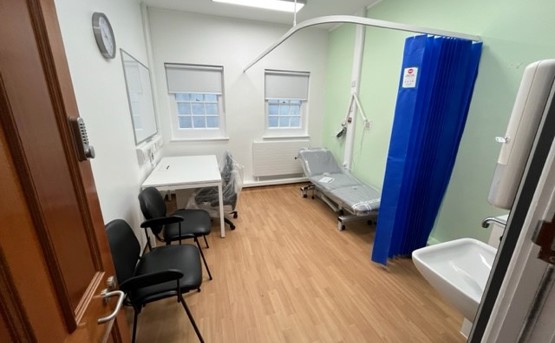
Published date: 22 January 2020
The London Plan’s impact on the NHS estate
Aahsan Rahman, Department Head of Town Planning at NHS Property Services, writes on how the draft new London Plan and associated reports will impact the NHS estate, and how the NHS can work together to maximise any potential opportunities.
The London Plan is the overall strategic plan for London, setting out an integrated economic, environmental, transport and social framework for the development of London over the next 20-25 years. The size and importance of the NHS estate and its programmes in London means that the policies within the London Plan have direct implications on the NHS estate. There are significant opportunities to improve healthcare facilities across the city, as well as delivering much needed housing for London on NHS land.
When the draft new London Plan was published for consultation in December 2017, the Town Planning team at NHS Property Services – as the only dedicated town planning team in the NHS - coordinated a system wide response. This was the first time the NHS coordinated a joint response to a city’s development plan, helping to ensure that health provision was prioritised and the NHS estate was treated fairly.
The Greater London Assembly (GLA) has now released its version of the report it intends to publish, which includes policy recommendations that will have an impact on the NHS estate.
Aahsan Rahman, Department Head of Town Planning at NHSPS, explains them below in turn:
Affordable Housing
Similar to the approach set out in the Mayor’s Affordable Housing and Viability SPG (2017), the plan sets out the option of a ‘fast-track’ route to affordable housing negotiations for planning applications seeking to deliver residential development, with two different thresholds for eligibility depending on whether a site is in public or private ownership.
To be eligible for the fast track route, the NHS would need to provide a minimum of 50% affordable housing, whilst sites in private ownership would only be required to provide 35% affordable housing. Where these targets are not met, multiple viability reviews will be required. This policy approach reflects the Government’s attitude to the role of public land in assisting the delivery of affordable housing. However, NHSPS argued it could have unintended consequences, including the potential to make NHS development schemes unviable, devaluing surplus NHS sites, deterring the provision of residential housing and putting both healthcare and residential provision at risk. In response, the Inspectors recognised and specifically referenced the NHS in their written response by stating that viability assessments are likely to be required on NHS sites to help assist with any viability issues.
Vacant Building Credit
The plan originally encouraged London boroughs to disregard the Vacant Building Credit (“VBC”), except in limited circumstances. Given the abundance of long-term vacant NHS sites across the country and in London, the VBC can help improve overall viability and financial returns for the NHS when disposing sites that are surplus to the requirements of clinicians. In some circumstances, VBC can incentivise the release of vacant NHS sites for housing where they are no longer needed.
NHSPS pointed out that the use of VBC would be consistent with national policy and this policy has been removed from the intend to publish version of the London Plan. Keeping the VBC will help to improve the overall viability and financial returns on a number of surplus NHS sites, potentially delivering higher capital receipts that will go towards vital NHS reinvestment.
Delivering Social Infrastructure, and Health and Social Care Facilities
Local authorities typically seek to protect against the loss of social infrastructure. However, all too often this has resulted in protracted and delayed planning processes which cost the NHS time and money. NHSPS therefore supported the Plans approach, which allows for the loss of social infrastructure as part of a wider public service transformation plan, requiring investment in modern, fit for purpose infrastructure and facilities. This approach will strengthen the existing policy stance, which only mentions public service transformation plans in supporting policy text.
Viability
The overall approach of the new plan to viability of sites will mean that developments contribute towards and provide necessary supporting health infrastructure to mitigate their impact. It is particularly encouraging to see that healthcare infrastructure is identified as one of the listed priorities for local authorities when developing planning policies.
Next steps
The Mayor of London’s Intend to Publish version of the London Plan, has been sent to the Secretary of State, with a schedule of the panel’s recommendation and the Mayor’s response to them. It is then expected that the London Plan will be formally adopted early this year. The NHS Property Services Town Planning Team will continue to monitor and, where appropriate, promote the need for planning policy changes that will work in the interests of the NHS.
Want to know more?
The NHS Property Services town planning team are also working on a series of practical guidance notes to support our customers and NHS partners.
If you would like any further information or guidance on these documents or wider projects, please get in touch with our Town Planning team.






